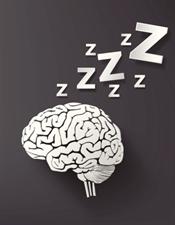
A study out today in the journal Science sheds new light on the biological mechanisms that control the sleep-wake cycle. Specifically, it shows that a simple shift in the balance of chemicals found in the fluid that bathes and surrounds brain cells can alter the state of consciousness of animals.
The study, which focuses on a collection of ions that reside in the cerebral spinal fluid (CSF), found that not only do these changes play a key role in stimulating or dampening the activity of nerve cells, but they also appear to alter cell volume causing brain cells to shrink while we sleep, a process that facilitates the removal of waste.
"Understanding what drives arousal is essential to deciphering consciousness and the lack thereof during sleep," said Maiken Nedergaard, M.D., D.M.Sc., co-director of the University of Rochester Center for Translational Neuromedicine and lead author of the study. "We found that the transition from wakefulness to sleep is accompanied by a marked and sustained change in the concentration of key extracellular ions and the volume of the extracellular space."
The current scientific consensus is that the brain is "woken up" by a set of neurotransmitters -- which include compounds such as acetylcholine, hypocretin, histamine, serotonin, noradrenaline, and dopamine -- that originate from structures deep within the brain and the brain stem. This cocktail of chemical messengers serve to activate -- or arouse -- a set of neurons in the cerebral cortex and other parts of the brain responsible for memory, thinking, and learning, placing the brain in a state of wakefulness.